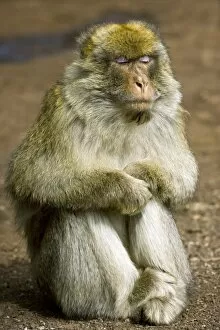Old World Monkey Collection (#5)
"Exploring the Old World Monkey: From Gibraltar to Borneo and Beyond" A glimpse into the old world of monkeys takes us to Gibraltar
All Professionally Made to Order for Quick Shipping
"Exploring the Old World Monkey: From Gibraltar to Borneo and Beyond" A glimpse into the old world of monkeys takes us to Gibraltar, where the Barbary Macaque reigns supreme in its natural habitat. Journeying further east, we encounter the majestic Proboscis monkey, a symbol of Sabah's rich biodiversity in Borneo. Amidst the lush rainforests of Borneo, a couple of Orang-Utans swing effortlessly through their treetop domain, showcasing their incredible adaptability. Rewinding time to 1928 at London Zoo, a Northern Plains Gray Langur captivates visitors as it sits gracefully on a perch within its enclosure. In an enchanting black and white photograph from 1924 at London Zoo, a Macaque perches upon a rock with an air of wisdom and curiosity. An old-world monkey finds comfort in the hands of its keeper at London Zoo – an endearing moment that speaks volumes about our connection with these fascinating creatures. Unusual yet captivating, an albino Old World Monkey dons a cozy sweater while residing at London Zoo during July – reminding us that even primates appreciate warmth and care. Venturing beyond Europe's borders to Rwanda's Volcanoes National Park reveals the mesmerizing Golden Monkey - an endangered species thriving amidst breathtaking landscapes. Witnessing Chacma baboons drinking from pristine waters in Botswana's Chobe National Park showcases Africa's wild beauty intertwined with these ancient primates' existence. Traveling across Asia brings us to Japan's Yamanouchi and Jigokudani Monkey Park where we witness heartwarming scenes as a mother monkey nurses her young amidst serene surroundings. 11 & 12: Delving into history through artistry by Henry Ogg Forbes unveils two remarkable species.



















